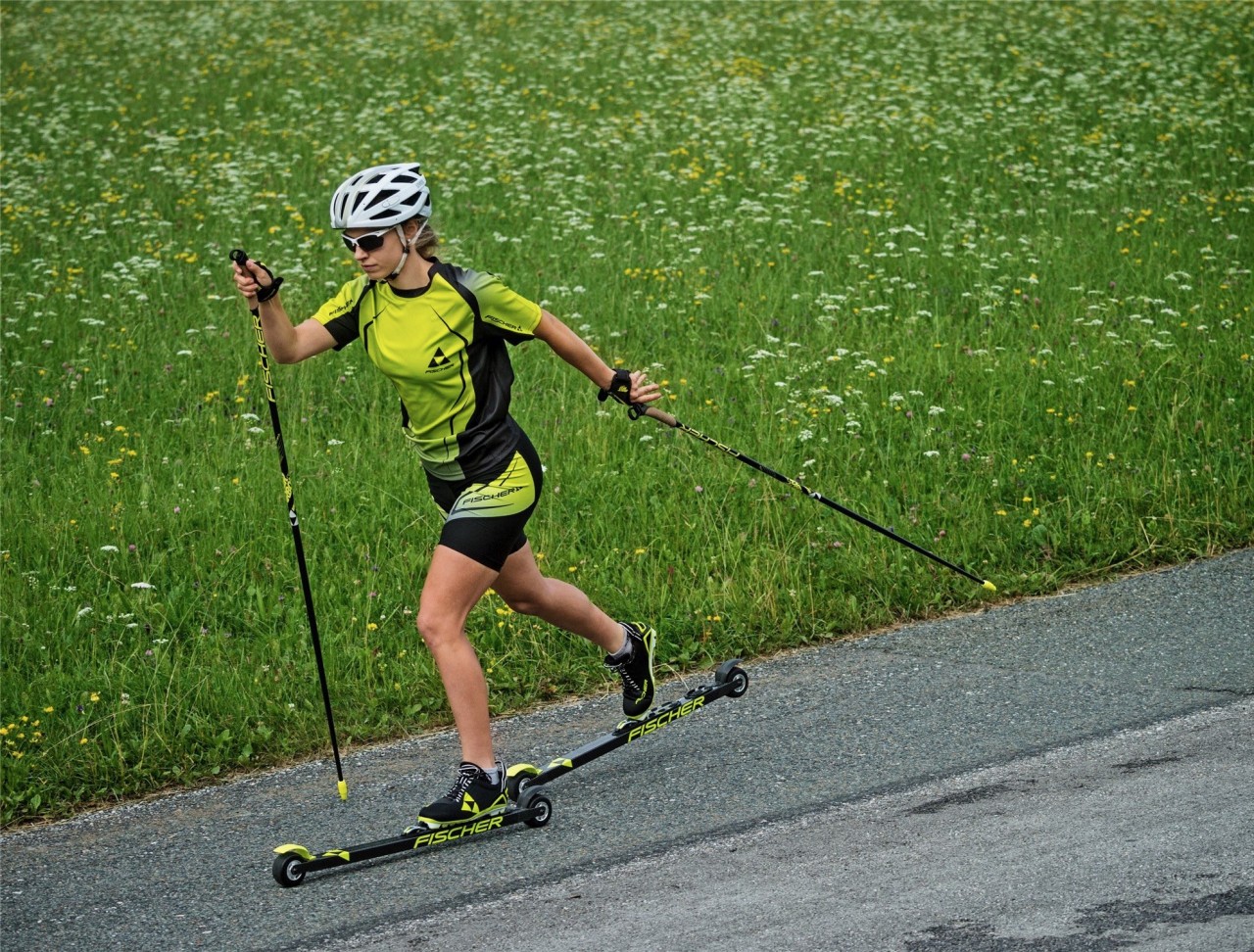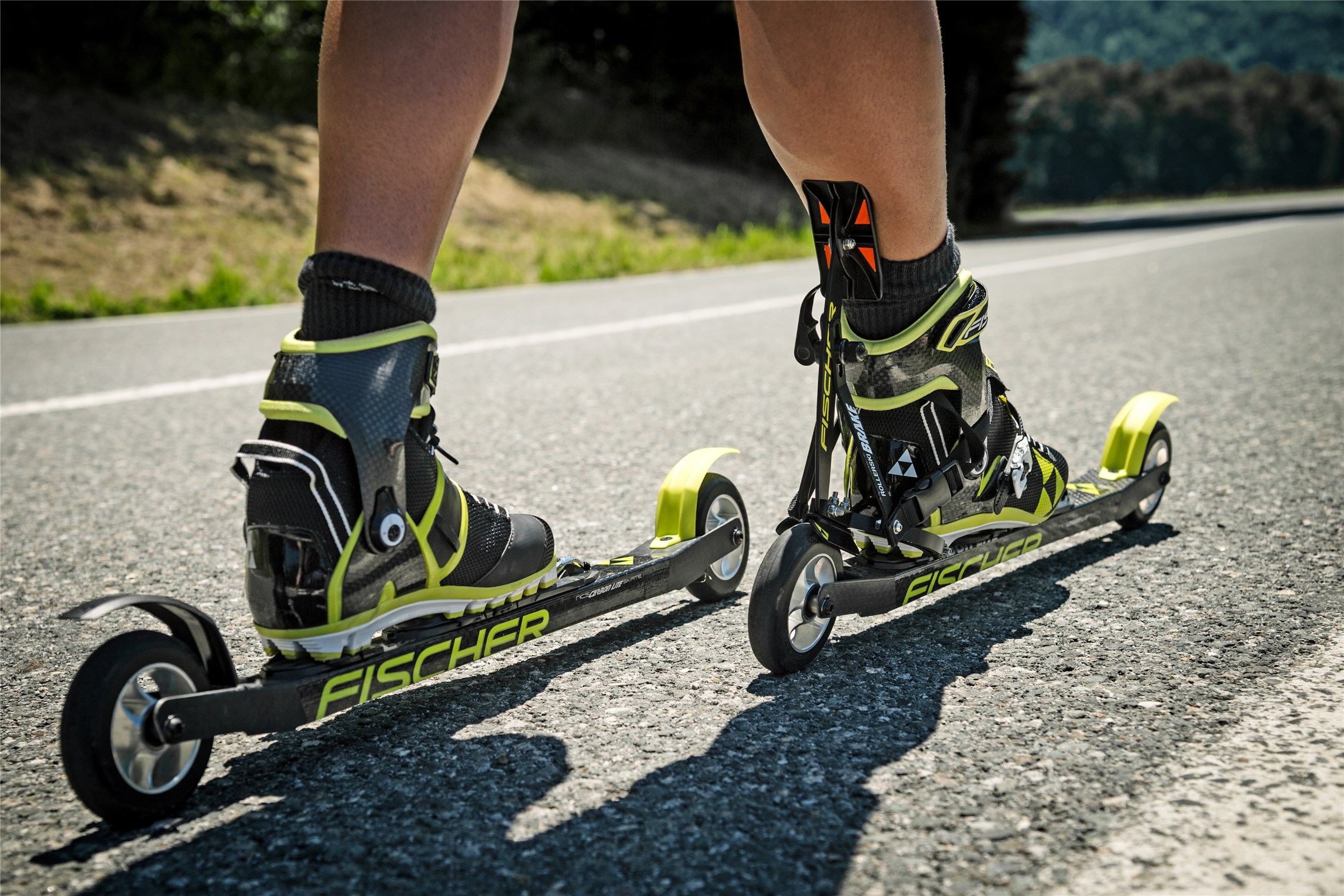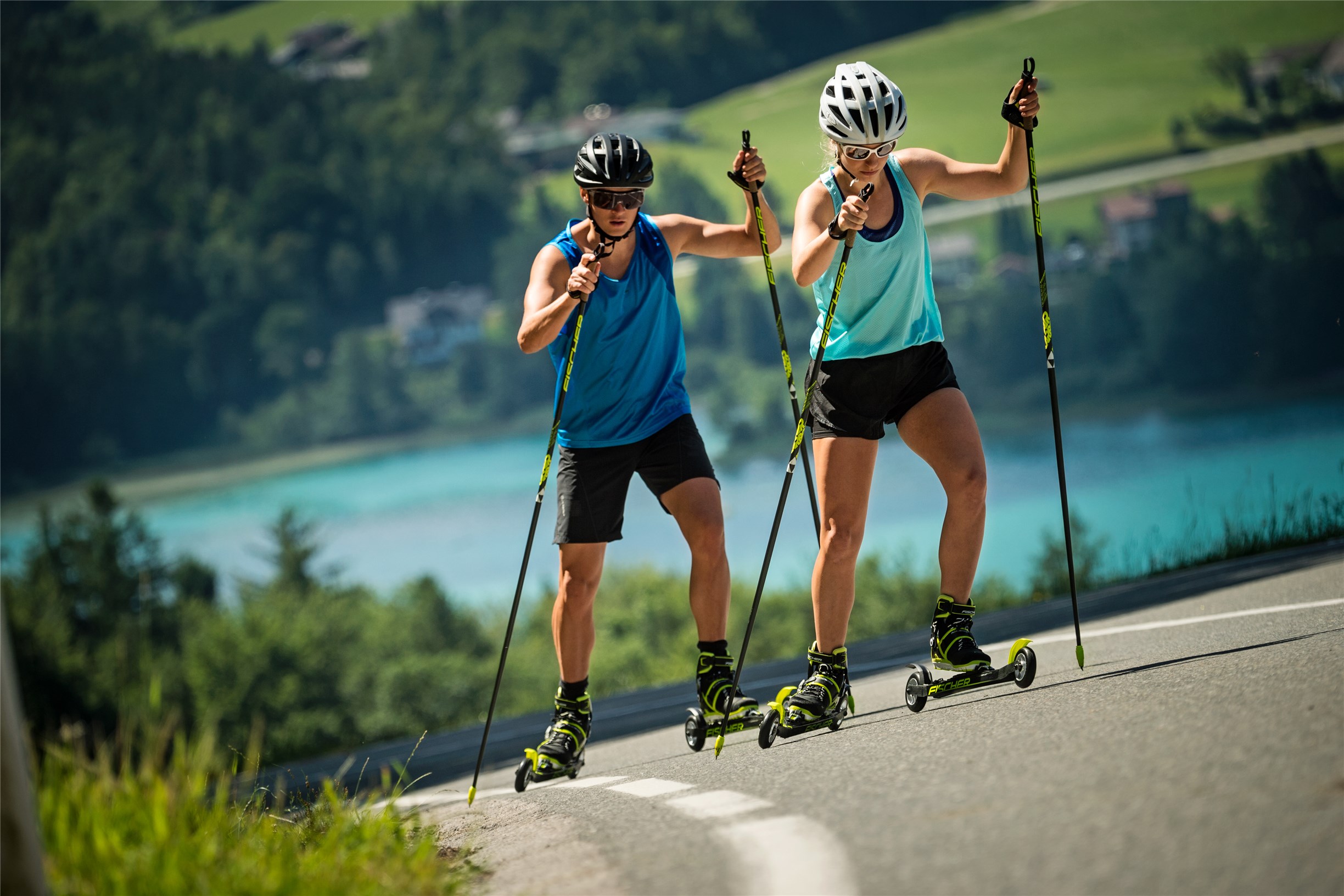 Roller Skiing 'classic' style
Roller Skiing 'classic' style
"I'm joining you on a cross country ski holiday and wondering how I can get fit for skiing?". Preparing for an adventure holiday is very much part of the excitement and anticipation, but without access to snow how can you possibility get ski fit? Roller skiing is definitely one of the answers.
There are many cross-country skiers learning and training on rollerskis. It’s a great way to improve technique, fitness and balance between winter trips and will add extra enjoyment to your winter holiday. Fern Cates is a former 'Team GB' Cross Country Skier and teaches roller skiing. Here is her short guide...
Roller skiing originated as a training method for cross-country ski athletes and enthusiasts to imitate the sport’s technique and practise ready for the winter seasons. Roller skiing is now acknowledged as a sport in its own right, with many roller ski clubs and events found around the world.
Roller skis are similar to snow skis, but have a shorter frame and have one wheel on each end. They use conventional cross-country ski bindings which connect the same boots that you would use on snow, creating the perfect ‘ski-feel’ to prepare you for winter.

Normal ski boots and bindings are used on the roller ski
Using the same technique as skiing on snow, it’s great for anyone who would like to take the edge off being a 'beginner' and learn the basics before their first trip on to the ski tracks, or providing the perfect off snow cross-trainer for those wanting to maintain ski fitness or technique before a big winter trip or event. Just like it’s winter counterpart, roller skiing is physically demanding, but provides a great full body, low impact workout. If you are aerobically able to cross-country ski you will also be able to roller ski and any nerves about potential falls onto tarmac can be tackled with the appropriate protective equipment (kneepads, elbow pads, helmets and some even opt for padded cycle shorts).
There are a variety of purpose built roller ski courses across Europe… In the UK there are just two, both of which are located in North Scotland. However, there are many cross country ski clubs across the UK which offer roller skiing tuition and training sessions, primarily using cycle tracks and public parks. Some clubs offer a ski touring style experiences with day trips along the Cambridge cycle route or through the English Lake District for example.
In the summer months there is a British Rollerski Race Series which sees an impressive turnout from the small, but dedicated community of roller skiers in the UK, with those in attendance ranging from total beginners to International athletes. There are details here of clubs throughout the UK.
If going roller skiing alone, local parks and cycle tracks (when permitted) are usually the best areas to start out with, roller skiers should look for a smooth tarmac surface with safe ground to the sides in case of any rolling off-track.

There are roller skis for 'classic' style and for 'skate' style. Here the style is skate, and they are using Skate 1 on the climb
Roller skis - There are different types available for 'classic' and 'skate' techniques or ‘combi’ skis- designed to be able to do both styles. There are also different wheel speeds available and specific frame designs suited to lighter and heavier skiers. Skate rollerskis are slightly shorter than classic (just like snow skis) and classic rollerskis use a wider wheel and a ratchet to imitate the ski wax or ‘fishscale’ effect on snow so that you can stride up hills in a classic technique without rolling backwards. A popular question roller skiers are often asked is ‘do they have brakes?’. No they do not have brakes, in the same way that skis do not have brakes apart from the technique you apply! It’s important to become confident on your wheels before attempting descents and familiarise yourself with the area and appropriate stopping techniques (which include step turns, snowploughs and emergency stops into grassy verges).
Bindings, boots and poles - For the rest of the ski equipment you can use exactly the same kit as you would in winter. Some choose to keep a pair of ski boots just for roller skiing as they can be prone to more wear and tear on the tarmac. Ski poles remain the same too, however, you can swap the tips from snow baskets to a slightly sharper pole tip that’s better suited to poling on hard surfaces.
Helmet and pads - Just like riding a bike, helmets are always expected to be worn when roller skiing even for the most competent, varying terrains and obstacles should be taken with caution. Beginners are also recommended to wear elbow and kneepads, these often provide new skiers with that extra bit of confidence as well as safety.
Now, have a look at this film which will bring all the above points together and give you a good idea of what's involved and why people enjoy it.
For more information about our cross-country skiing trips, either bespoke or Scheduled Departures, speak to one of our expert team by calling +44 (0) 20 8144 64442 or email This email address is being protected from spambots. You need JavaScript enabled to view it. In addition to cross-country skiing we offer snowshoeing, and in summer hiking and trail running.
